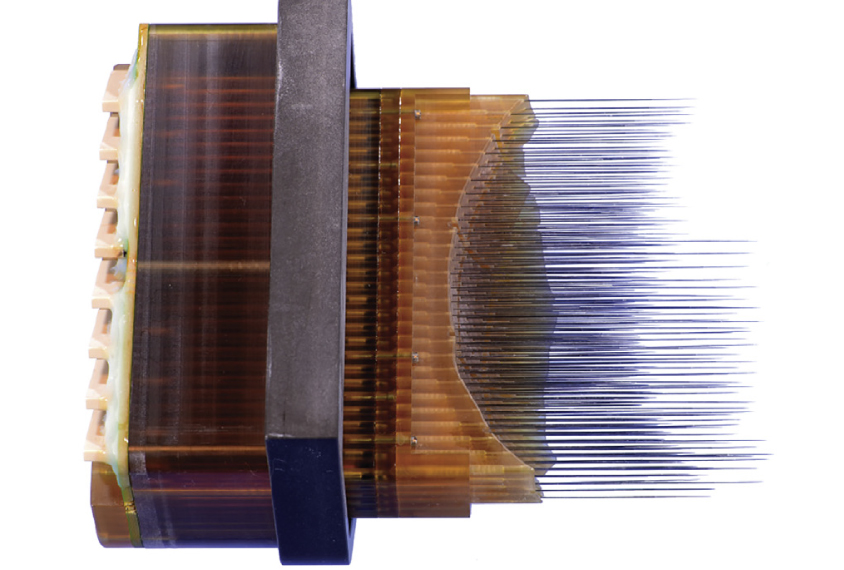
THIS ARTICLE IS MORE THAN FIVE YEARS OLD
This article is more than five years old. Autism research — and science in general — is constantly evolving, so older articles may contain information or theories that have been reevaluated since their original publication date.
A large array of electrodes can record the activity of neurons across a wide swath of a monkey brain1. Monitoring neuronal activity in many brain regions simultaneously could reveal how that activity is altered in autism.
Typical electrode arrays for recording brain activity must be fixed in place to reduce the risk of infection due to tissue damage. A few small arrays include movable electrodes that scientists position individually. Either way, coverage is limited — in breadth as well as depth.
The new array includes 256 electrodes and spans an entire brain hemisphere. A screw mechanism allows researchers to lower individual electrodes to reach deep targets.
The array is surgically implanted through a monkey’s skull. Once placed, electrical signals pass from each electrode through a brass sheath that wraps around a long screw. The screw extends up to a circuit board, which records the signals. The screws are long enough that electrodes can be placed as deep as 41 millimeters into the brain — far enough to reach interior structures, including the thalamus.
The researchers tested the array in two macaques. They taught the monkeys to recognize a picture and pick out the matching image from five options by staring at it. The monkeys performed this task several days a week for six and nine months, respectively, while the researchers recorded brain activity.
Over that time, the researchers gradually moved the electrodes deeper into the brain. At the end of the experiments, the researchers matched the recordings to the locations of the electrodes by measuring the tracks the electrodes had created through the brain tissue. In the second monkey, which had an improved version of the device, the array picked up neuron activity across 56 areas on the brain’s surface and 4 embedded regions. It sampled up to 37 areas simultaneously. These areas were defined in previous studies that mapped neuronal connections across the monkey brain.
The device could enable scientists to target circuits that span large areas of the brain and to monitor how activity in one circuit affects a distant one. The researchers described the device 15 November in Neuron.
By joining the discussion, you agree to our privacy policy.